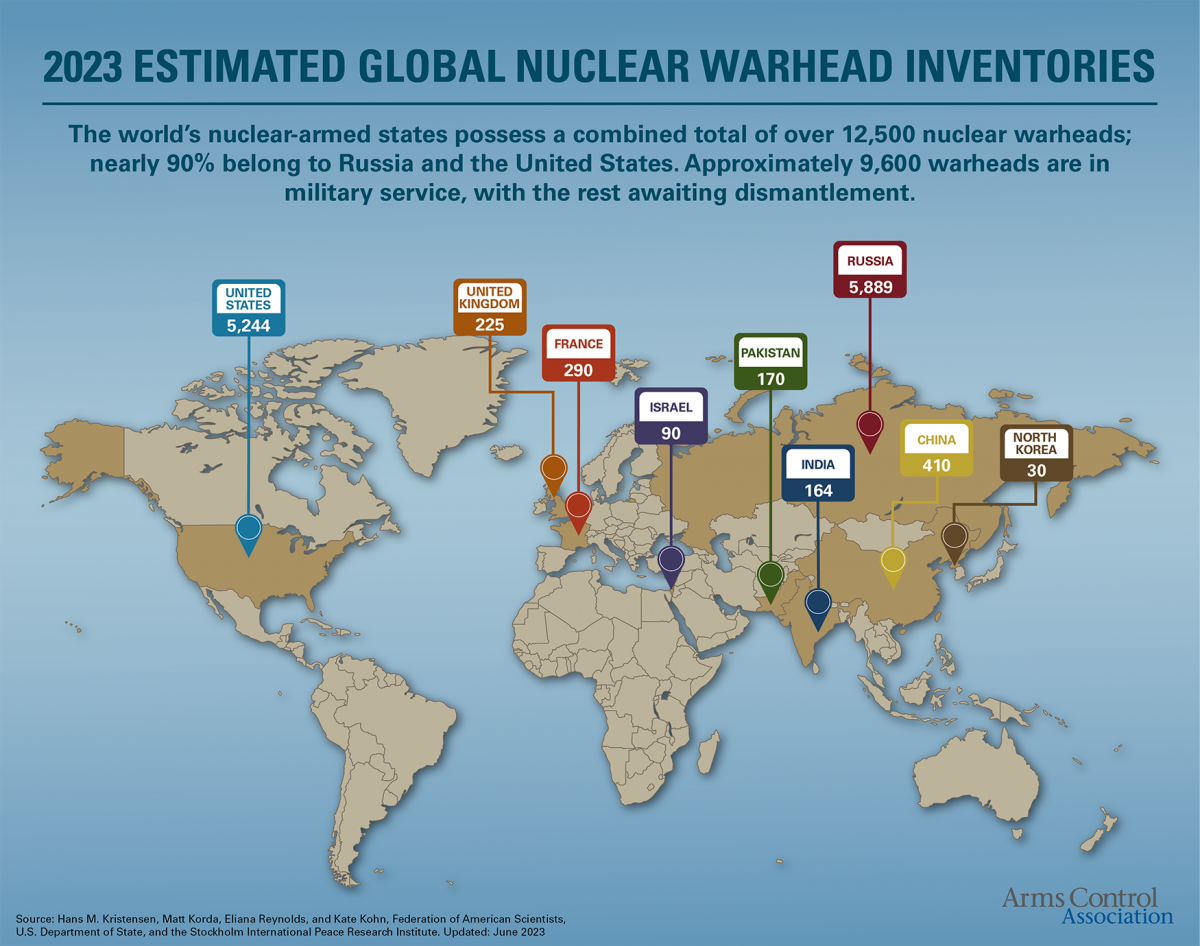Login/Logout
"No one can solve this problem alone, but together we can change things for the better."
– Setsuko Thurlow
Hiroshima Survivor
June 6, 2016
Fact Sheets
The Arms Control Association maintains over 100 regularly updated factsheets on a range of regional and topical arms control issues.
Subject Categories
Iran
- The Joint Comprehensive Plan of Action (JCPOA) at a Glance
- Restoring the JCPOA’s Nuclear Limits
- Monitoring Iran’s Nuclear Activities: NPT and JCPOA Requirements
- The Joint Comprehensive Plan of Action: An Effective, Verifiable Nuclear Deal
- Timeline of Nuclear Diplomacy with Iran
- IAEA's Investigations of Iran's Nuclear Activities
- UN Security Council Resolutions on Iran
- Implementation of the Joint Plan of Action at a Glance
- Editorials Supporting an Iran Nuclear Deal, January-September 2015
- Official Proposals on the Iranian Nuclear Issue, 2003-2013
- See more...
North Korea
Nuclear Nonproliferation and Nuclear Security
- Nuclear Weapons: Who Has What at a Glance
- The Nuclear Nonproliferation Treaty (NPT) at a Glance
- IAEA Safeguards at a Glance
- Nuclear Security Summits at a Glance
- The Comprehensive Test Ban Treaty (CTBT) at a Glance
- Nuclear-Weapon-Free Zones (NWFZ) At a Glance
- Nuclear Suppliers Group (NSG) at a Glance
- See more...
Chemical and Biological Weapons
- Timeline of Syrian Chemical Weapons Activity 2012-2020
- Chemical Weapons: Frequently Asked Questions
- The Chemical Weapons Convention (CWC) at a Glance
- The Biological Weapons Convention (BWC) at a Glance
- Chemical and Biological Weapons Status at a Glance
- Chronology of Libya's Disarmament and Relations with the United States
- Biological Weapons Convention Signatories and States-Parties
- Chemical Weapons Convention Signatories and States-Parties
- The Australia Group at a Glance
- The 2006 Biological Weapons Convention Review Conference Reader
- See more...
Missiles and Missile Defense
- Worldwide Ballistic Missile Inventories
- U.S. Missile Defense Programs at a Glance
- The Missile Technology Control Regime at a Glance
- The Anti-Ballistic Missile (ABM) Treaty at a Glance
- The European Phased Adaptive Approach at a Glance
- U.S. and Allied Ballistic Missile Defenses in the Asia-Pacific Region
- See more...
U.S.-Russia Nuclear Forces and Arms Control Agreements
- Open Skies Treaty at a Glance
- U.S.-Russian Nuclear Arms Control Agreements at a Glance
- The Intermediate-Range Nuclear Forces (INF) Treaty at a Glance
- U.S. Nuclear Modernization Programs
- New START at a Glance
- U.S. Strategic Nuclear Forces Under New START
- Russian Strategic Nuclear Forces Under New START
- See more...





